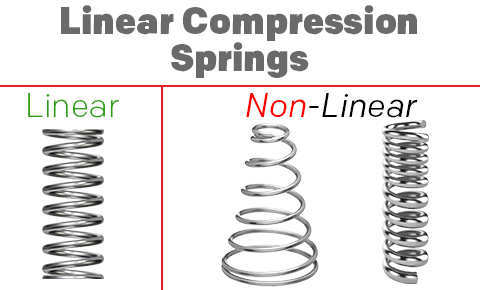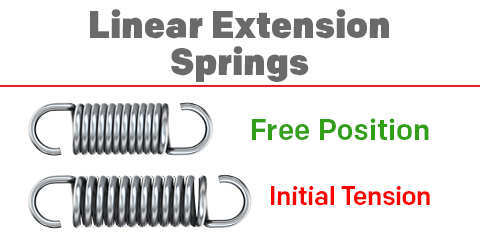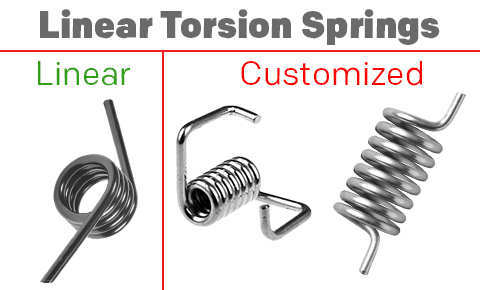Linear Spring Rate
Definition: Linear springs are helical coil springs that exert a constant rate of force per inch (or millimeter) or degree of distance traveled. This means that the load applied to the spring will be proportional to the amount of distance it travels based on the spring rate of your linear spring.
Linear Compression Springs
Linear compression springs are the most commonly used in the spring industry. They are a lot easier to design than a conical or barrel spring would be because a linear spring’s rate is constant. A tapered spring’s force, on the other hand, is not based on a constant increase per inch of travel due to the different outer diameters per coil which compose the tapered, cone, or barrel spring.
There are other customizable adjustments you can make to a linear spring besides changing the diameters of its coils. You may also adjust the pitch (rise angle of coils). Spring pitch is highly involved in your spring’s force and travel capacities so having a variation of pitch between your spring’s coils will definitely alter your springs force, turning this into a non-linear spring.

Linear Extension Springs
Linear extension spring design is quite similar to a linear compression spring’s. The difference between these two types of linear springs is that a linear extension spring’s coils have no pitch in between and they need a form of pre-tension in order to remain in there compressed state.
This is called initial tension and it is an additional force that must be added to your load when doing spring rate calculations. Initial tension is released once your spring is extended to a point where you can see light in between its coils.

Linear Torsion Springs
Linear torsion springs are quite different from compression and extension springs because it’s not a push / pull action they’ll have to undergo but a rotational one. This doesn’t mean they aren’t linear though. Linear torsion spring rate is also constant and the load applied to a torsional spring’s legs is also proportional to the amount of degrees if will travel under that load.
On rare cases, a customer may decide to turn their torsional spring into a torsional compression spring by adding pitch between the coils. They can also turn linear torsion springs into a torsion extension spring by simply making some alterations to the torsion spring legs so that they play as hooks. These modifications do not make your torsion spring a non-linear spring but a double linear spring depending on whether you chose to use it as a torsion compression spring or a torsional tension spring since both the compression and extension specifications of your spring are also designed as linear.






